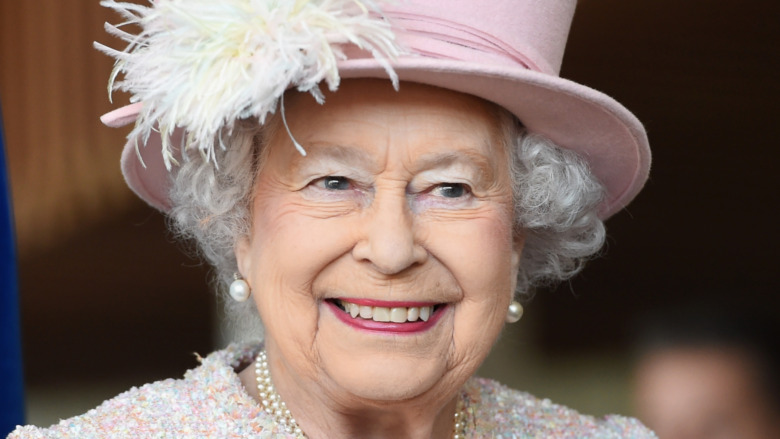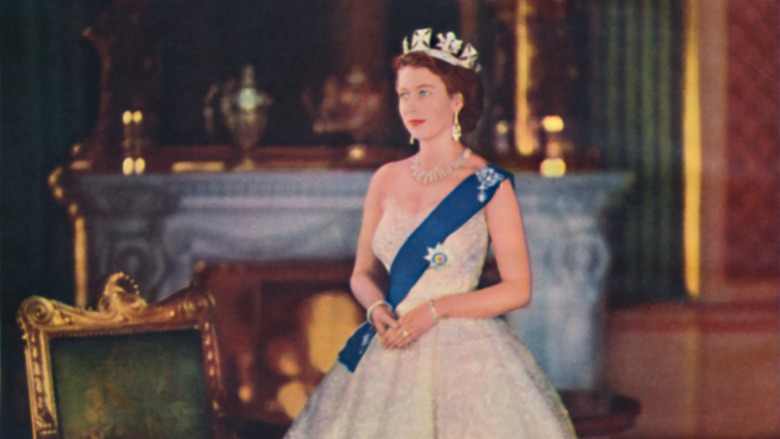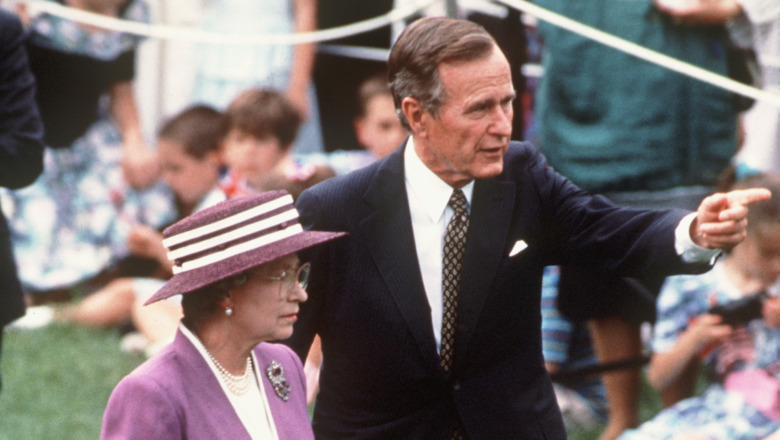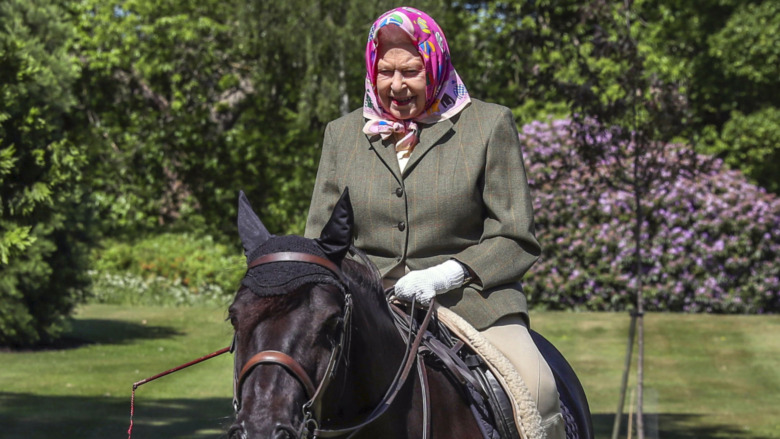The Real Reason The Queen Is So Much Smaller Than She Used To Be
Queen Elizabeth II has been queen of the British Commonwealth for almost 70 years. She first took to the throne in 1952, when her father, King George VI, died of lung cancer, but she was not officially crowned until 1953. Those who are familiar with the queen for her entire reign (or who have seen pictures of her from her coronation) and have seen her more recently (notably, for the funeral of her husband, Prince Philip, the Duke of Edinburgh,) may have noticed a somewhat significant change in her appearance.
Though Elizabeth as monarch seems to have a larger-than-life personality (one that she pairs with brightly colored suits), it would be hard to miss that she seems to have lost a bit of height throughout the years. While initially standing tall during her coronation, the queen seems to have shrunk a few inches throughout the years. In fact, according to Express, the queen has reportedly shrunk three full inches. During her coronation, the queen reportedly stood at 5 feet 4 inches tall. As of 2019, however, it was reported that, at 93 years old, Elizabeth was just 5 feet 1 inch tall. Why is that?
Why has Queen Elizabeth II's height shrunk so much?
Queen Elizabeth II has reportedly lost three inches from when she was 25 years old at her coronation in 1953 to 2019, when she was 93 years old. But why has she lost such a significant amount of height and is it something to worry about? According to Express, the queen's lost stature can be ascribed to her age. The publication reached out to a medical professional, Dr. Robin Chatterjee, who told them, "We all shrink over time. We lose between a quarter and half an inch every decade after the age of 40." He also told Express that females tend to "shrink more than men." Taking that into consideration, it would make sense that the queen, at 94 years old, would have lost around two and a half inches.
Dr. Chatterjee shared with Express that the shrinking isn't much to be worried about. He did caution that decreasing bone density and muscle mass can cause bones to become fragile and thus more prone to breaking (which can lead to increased shrinking). But he also stated that becoming shorter as one ages is to be expected. Hormones used to repair bones and cartilage between vertebrae lessen due to wear and tear, reducing the space between them, which can cause the spine to curl and the height to reduce.
Queen Elizabeth II's health is no cause for concern
In an excerpt of Long Live the Queen: 23 Rules for Living from Britain's Longest-Reigning Monarch, via Glamour, author Bryan Kozlowski describes a woman who, at 94 years old, is still fit beyond measure. Kozlowski included an anecdote where Margaret Thatcher, who was prime minister of the United Kingdom, attempted to keep up with the queen as they greeted dignitaries at the "annual diplomatic reception." It was a failed endeavor, however, as Kozlowski wrote that Thatcher collapsed well before the queen ever tired. "Oh, look! She's keeled over again," Queen Elizabeth II reportedly said when Thatcher passed out for the second year in a row.
That anecdote is just one of many that show how fit the queen is, even in her later years. In a trip to the United States, then-President George H.W. Bush told Elizabeth she had "left even the Secret Service panting," something very few people can ever do. She "is a fireball of stamina and inexhaustible energy," Kozalowski wrote, and her "deceptively petite figure" should not be underestimated. He wrote she has trained to be on her feet and without food and drink (or even a bathroom break) for hours, and said one little-known requirement of being one of her ladies-in-waiting is the sheer ability to keep up with her.
But people who want to know how to achieve such a healthy and fit lifestyle might be hard-pressed to find any specific workout routine she does, which may be surprising to some.
Queen Elizabeth II 'is a great believer in sensible exercise'
Those who are familiar with Queen Elizabeth II's fitness routine know that the only time she has truly worked out was when she was preparing for her coronation. "Insisting on wearing the traditional (and cumbersomely heavy) St. Edward's Crown for her coronation in 1953," Bryan Kozalowski wrote in Long Live the Queen, via Glamour, "Elizabeth rehearsed for weeks prior, marching around the palace wearing the nearly five-pound jewel-encrusted crown." She wears the crown for the State Opening of Parliament every year, as well, so it's a strength she has kept up throughout the years. She also wears a 15-pound velvet Robe of State for the event.
Aside from the regal requirements, however, Elizabeth rarely works up a sweat, choosing instead to merely walk at a brisk pace everywhere, including her daily afternoon walk at 2:30 with her corgis. She will move at an "intentionally measured and deliberate pace," but will do nothing more vigorous than that.
The queen's refusal of strict exercise seemingly has more to do with her upbringing than anything else. As Kozalowski wrote, her father, King George VI, was raised with a "boot-camp-style upbringing," and George wanted something different for his daughters. In fact, he reportedly hired the governess he did because she liked to walk and would make moving fun for the girls. This is something she has continued throughout her life, engaging in activities like horseback riding and walking her corgis. This focus on fun has undoubtedly led to the queen's incredible stamina.




